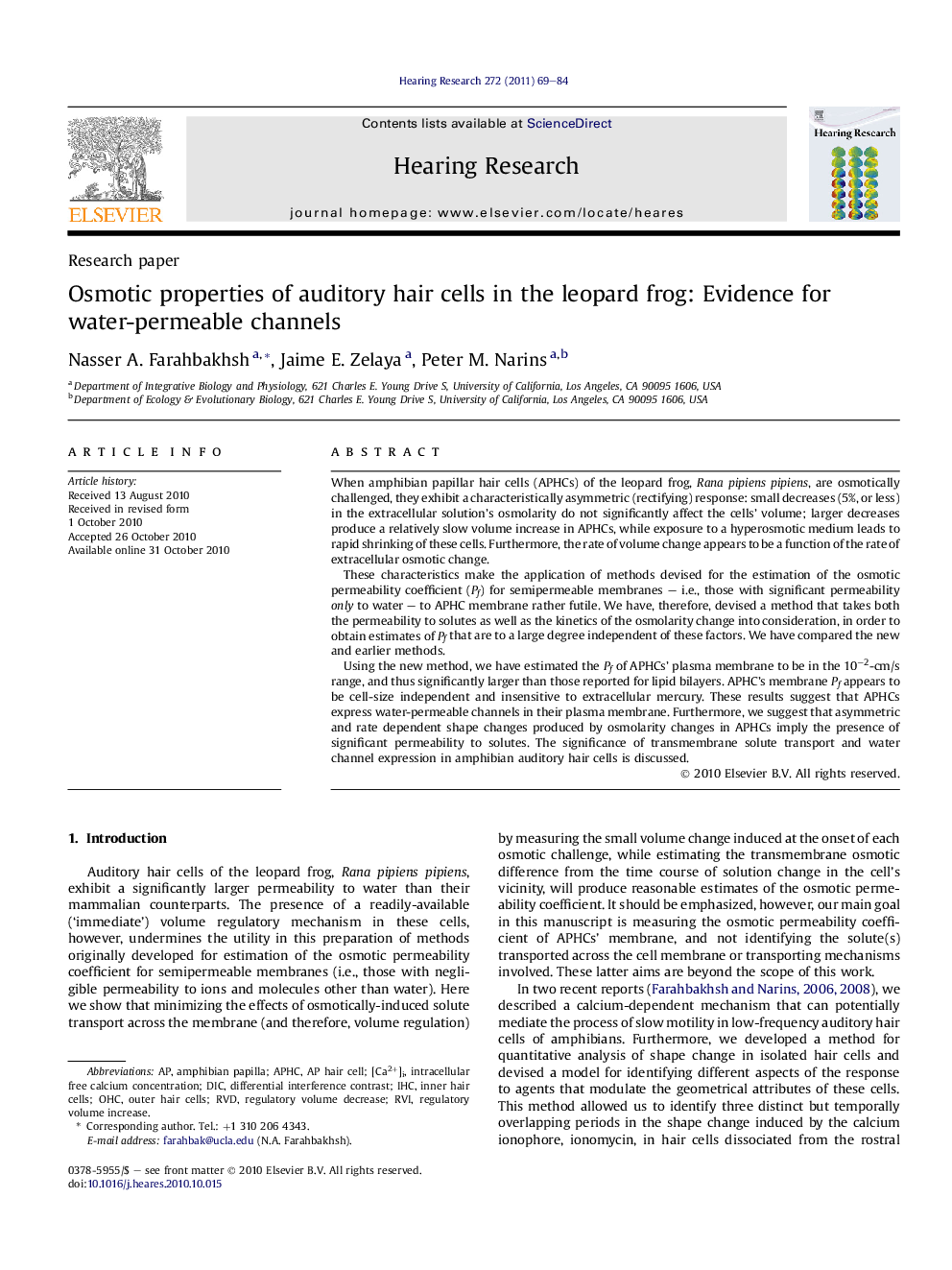| کد مقاله | کد نشریه | سال انتشار | مقاله انگلیسی | نسخه تمام متن |
|---|---|---|---|---|
| 4355553 | 1615628 | 2011 | 16 صفحه PDF | دانلود رایگان |

When amphibian papillar hair cells (APHCs) of the leopard frog, Rana pipiens pipiens, are osmotically challenged, they exhibit a characteristically asymmetric (rectifying) response: small decreases (5%, or less) in the extracellular solution’s osmolarity do not significantly affect the cells’ volume; larger decreases produce a relatively slow volume increase in APHCs, while exposure to a hyperosmotic medium leads to rapid shrinking of these cells. Furthermore, the rate of volume change appears to be a function of the rate of extracellular osmotic change.These characteristics make the application of methods devised for the estimation of the osmotic permeability coefficient (Pf) for semipermeable membranes – i.e., those with significant permeability only to water – to APHC membrane rather futile. We have, therefore, devised a method that takes both the permeability to solutes as well as the kinetics of the osmolarity change into consideration, in order to obtain estimates of Pf that are to a large degree independent of these factors. We have compared the new and earlier methods.Using the new method, we have estimated the Pf of APHCs’ plasma membrane to be in the 10−2-cm/s range, and thus significantly larger than those reported for lipid bilayers. APHC’s membrane Pf appears to be cell-size independent and insensitive to extracellular mercury. These results suggest that APHCs express water-permeable channels in their plasma membrane. Furthermore, we suggest that asymmetric and rate dependent shape changes produced by osmolarity changes in APHCs imply the presence of significant permeability to solutes. The significance of transmembrane solute transport and water channel expression in amphibian auditory hair cells is discussed.
Research highlights
► The amphibian papillar hair cell’s membrane has an osmotic permeability coefficient significantly larger than that of a lipid bilayer.
► When exposed to a hypoosmotic challenge, these cells exhibit an immediate volume regulatory response, possibly by releasing a significant amount of existing intracellular solutes.
► In an anuran amphibian that lacks the ability to maintain extracellular fluid homeostasis, high permeability to water and osmolytes confer to auditory hair cells the adaptive advantage to endure and compensate for gradual changes in the extracellular osmolarity.
Journal: Hearing Research - Volume 272, Issues 1–2, February 2011, Pages 69–84